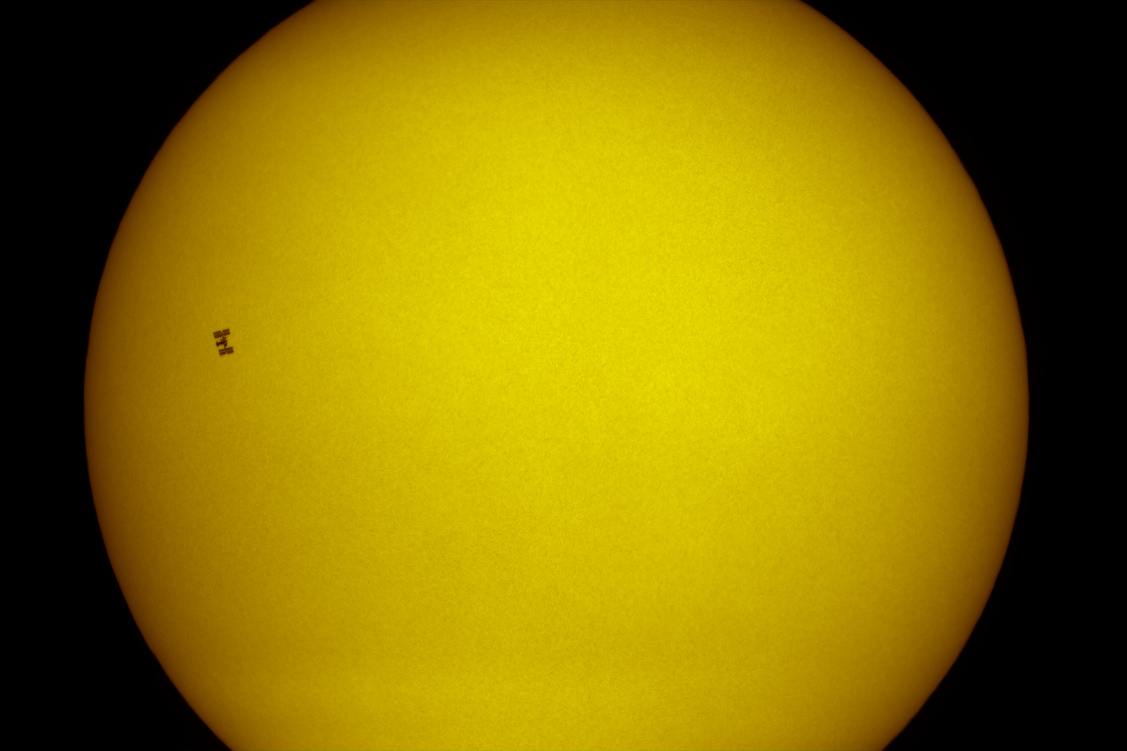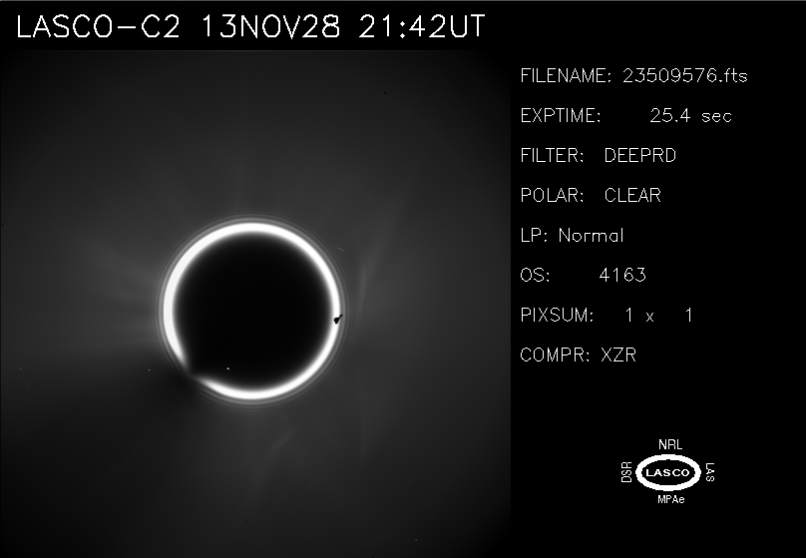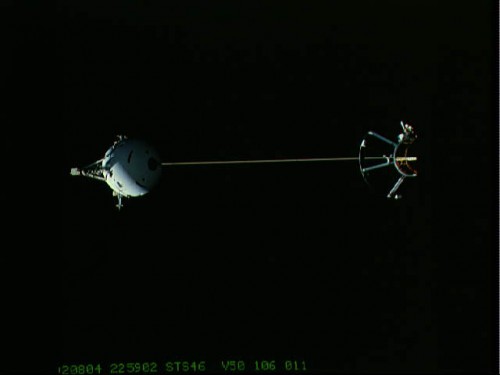It looks like you're using an Ad Blocker.
Please white-list or disable AboveTopSecret.com in your ad-blocking tool.
Thank you.
Some features of ATS will be disabled while you continue to use an ad-blocker.
share:
MadHatter364
reply to post by skyblueworld
This sequence spans 36 milliseconds of real time. The object was moving East at 1 degree per second.
WHAT ????
36 MILLISECONDS ???
-(1 millisecond is 0.001 seconds)-
33.367 milliseconds is the amount of time one frame lasts in an 29.97fps video, BUT HERE WE CLEARLY HAVE MORE THAN 1 FRAME: the object moves.
How did they manage to record that, are they using high speed cameras to record the surface of the Sun? It doesn't really make sense...
Let's do some math here.... 36 Miliseconds = 0.036 seconds.
Okay, so with that in mind, let's think for a second about cameras that are used by the general public for research or scientific purposes. These can EASILY record over 1000fps:
Early high-speed cameras used film to record the high-speed events, but today high-speed cameras are entirely electronic using either a charge-coupled device (CCD) or a CMOS active pixel sensor, recording typically over 1,000 frames per second into DRAM and playing images back slowly to study the motion for scientific study of transient phenomena
Source - Wikipedia - High-speed cameras
So doing the calculations, at 1,000 frames / 1 second (1000fps), how many frames are captured?
(1,000frames / 1 second ) * 0.036 = 36 frames.
So yes, they must be using AT LEAST conventional high-speed imagery, if not some newfangled NASA optics that we won't see until 2020.
TrueBrit
reply to post by UnmitigatedDisaster
Just a little bit of common sense would be nice folks, you know, like we used to have around here as a matter of course?
Common sense was what made me question how a 36 millisecond event created a gif more than a second long, but hey sure, let's go ahead and pretend that makes perfect sense and that common sense dictates we jump immediately to assumptions of what the "object" is instead of addressing an obvious oddity in the presented story.
Man, common sense sure has changed since I first learned it.
edit: See, someone above this post addressed the type of optics used and the probable FPS of the camera involved. -That- is using logic and reasoning, ergo: common sense. Now that we can safely assume the gif is from a highspeed camera, we can discount that as an issue in the story.
edit on 3-12-2013 by UnmitigatedDisaster because: (no reason given)
cantsee4looking
thats one big satellite....??
I can't tell how far "zoomed in" we are seeing the Sun or how magnified the telescopic image is, so we can't tell how big the satellite is compared to the Sun. Plus, we don't know if that satellite is in low Earth orbit, medium orbit, or a high Earth orbit -- and the difference could be 20,000+ miles from the camera.
Here is how big the ISS looks compared to the Sun (this picture taken as the space station and the docked shuttle "Endeavor" passed between the Sun and a telescope

But with a more powerful telescope or a more zoomed-in image, the space station could look larger.
edit on 12/3/2013 by Soylent Green Is People because: (no reason given)
Not sure what it is. Definitely a man made object of some kind. We might never know what exactly it is, just like I have no explanation for what the
object in this photo is: 

Did someone remember that tethered satellite? it looks like that?


reply to post by ikonoklast
Sorry to reply to my own post, but just for fun I thought of a third even more mind boggling possibility [impossibility?]. If it is a satellite orbiting the sun and the 1 degree per second is relative to the earth, then:
(distance traveled per 1 second)= (93,000,000 miles) * (tangent of 1 degree) = approximately 1,623,000 miles per second, or about 8.7 times the speed of light
Even if it is possible for it to go that fast, I cannot imagine what it would look like from our point of view on earth.
Assuming the earth is the point of reference for the '1 degree per second' speed, assuming it is at least as far from the earth-based telescope as a low earth orbit satellite (~100 miles) and knowing that it is no further from the sun than the earth (since it passed between), then:
Maximum speed is approximately 8.7 times the speed of light. Minimum speed is still 15 times as fast as other low earth orbit satellites and 1.5 times faster than the fastest publicly known man-made craft ever.
Sorry to reply to my own post, but just for fun I thought of a third even more mind boggling possibility [impossibility?]. If it is a satellite orbiting the sun and the 1 degree per second is relative to the earth, then:
(distance traveled per 1 second)= (93,000,000 miles) * (tangent of 1 degree) = approximately 1,623,000 miles per second, or about 8.7 times the speed of light
Even if it is possible for it to go that fast, I cannot imagine what it would look like from our point of view on earth.
Assuming the earth is the point of reference for the '1 degree per second' speed, assuming it is at least as far from the earth-based telescope as a low earth orbit satellite (~100 miles) and knowing that it is no further from the sun than the earth (since it passed between), then:
Maximum speed is approximately 8.7 times the speed of light. Minimum speed is still 15 times as fast as other low earth orbit satellites and 1.5 times faster than the fastest publicly known man-made craft ever.
reply to post by wildespace
Why? Because we live in the post-conspiracy world wherein everything is presumed to be a part of some huge coverup until proven otherwise. From JFK, the moon landing, Vietnam, 9/11, Sandy Hook, Paul Walker's death and now this satellite crossing the sun. Get with it man, it's all a conspiracy. That satellite very clearly appeared out of nowhere, the official story is total bs and I'm not entirely convinced that that is even an image of the sun. How is it that we can take an image of the sun but we can't send a mission to land on the sun? Why? Conspiracy man, that's why. stupid sheeple.
I'll be flaming noobs in the noob forum if you need me. They actually think they were delivered through their mothers vaginas even though it's obviously too small. All scientists are liars, us internet based researchers are all geniuses.
Why? Because we live in the post-conspiracy world wherein everything is presumed to be a part of some huge coverup until proven otherwise. From JFK, the moon landing, Vietnam, 9/11, Sandy Hook, Paul Walker's death and now this satellite crossing the sun. Get with it man, it's all a conspiracy. That satellite very clearly appeared out of nowhere, the official story is total bs and I'm not entirely convinced that that is even an image of the sun. How is it that we can take an image of the sun but we can't send a mission to land on the sun? Why? Conspiracy man, that's why. stupid sheeple.
I'll be flaming noobs in the noob forum if you need me. They actually think they were delivered through their mothers vaginas even though it's obviously too small. All scientists are liars, us internet based researchers are all geniuses.
reply to post by 0bserver1
Possibly...but tether satellites have not been very popular. They are VERY big (This one is 12 miles long) and take a lot of effort and planning to deploy. During STS-75, NASA tried to launch one and it failed miserably...well I guess it depends on what you call a miserable fail:
You hear NASA astronauts and the narration.
Possibly...but tether satellites have not been very popular. They are VERY big (This one is 12 miles long) and take a lot of effort and planning to deploy. During STS-75, NASA tried to launch one and it failed miserably...well I guess it depends on what you call a miserable fail:
You hear NASA astronauts and the narration.
edit on 3-12-2013 by DragonFire1024 because: (no reason given)
edit on 3-12-2013 by
DragonFire1024 because: (no reason given)
UnmitigatedDisaster
I'm confused about their report of timing as well. Thirty-six milliseconds seems awfully quick for the number of frames presented.
Also, why does it seem to appear from nowhere? Assuming that the gif was the entire sequence then the dot with a line appeared out of no where and moved across.
I'm not an expert at all, so maybe that's why it doesn't make sense to me; but it doesn't make me think of anything fantastical being likely either.
The satellite did not appear out of nowhere. The satellite was visible in the very first frame of the film.
36 milliseconds is 36/1000 of a second. Normal video frame rates are 30 frames per second, so each frame at 30 fps would equal 33 milliseconds (.033 seconds) of time. This video is obviously way more than 1 frame (although I can't tell how many frames), so the astronomer must have filmed it at a higher frame rate to get .036 seconds of motion on as many frames as he did.
...All of which is very possible.
pretty sure SOHO is a cube shape and it does have an occluding disk (which I think is built into the lens). Besides somebody just did the math on the speed of this thing and either way you look at it it is moving faster than even our fastest known terrestrial or space objects.
ParanormalGuy
bottleslingguy
uh notice the long boom/appendage sticking out the ten/eleven o'clock position of the main circle with the dot on the end of it. Compared to the size of those sunspots (which we are zoomed in on), it nullifies any claim that the object is small. If anyone can't figure that out it's their problem.
Alda1981
since none said it... ummm MERCURY??
The plane was also large compared to the sunspots.
What you see is a satellite imaging the area around the sun, the little dot at the end of the boom is there to block the sun from the camera view so it can get a better picture of what is ejected from the sun etc...
Very interesting thread. The object reportedly traveled 1 degree per second. It appears to take about two second for it to complete its motion in the
video. This is obviously slowed down, as the real time span is given as 36 milliseconds. The slowed down version is, then, about 55 times slower than
the original. From the claimed true speed of the object, and how long it really takes the main body (the round part) to move across its own diameter,
I surmise that it is about 45 arc seconds across.
A satellite in low Earth orbit would have to be rather large to present such a sight. I estimate that at 125 miles altitude it would have to be about 135 feet across; at 250 miles 270 feet in diameter, and so forth. The 'boom' would have to be much longer, in either case. In the likely event that someone can point to an error in my math, please do so.
A satellite in low Earth orbit would have to be rather large to present such a sight. I estimate that at 125 miles altitude it would have to be about 135 feet across; at 250 miles 270 feet in diameter, and so forth. The 'boom' would have to be much longer, in either case. In the likely event that someone can point to an error in my math, please do so.
edit on 3-12-2013 by Ross 54 because: adjusted figure to eliminate
implication of unobtainable precision
edit on 3-12-2013 by Ross 54 because: improved paragraph structure
edit on
3-12-2013 by Ross 54 because: improved syntax
edit on 3-12-2013 by Ross 54 because: corrected erroneous size figures
grey580
Could be any one of these on the list.
en.wikipedia.org...
And probably some not on the list.
this one was the first on your list, so no it couldn't be any one of the ones listed. upload.wikimedia.org... Fail
reply to post by hammanderr
what do you expect- peer reviewed journals? could never keep up with what's coming
what do you expect- peer reviewed journals? could never keep up with what's coming
0bserver1
Did someone remember that tethered satellite? it looks like that?
You're saying there is one floating around up there someone forgot about? seriously?
reply to post by bottleslingguy
More than possible it might very well be space junk. There is plenty of abandoned and or destroyed craft up there and this could very well be one of them.
More than possible it might very well be space junk. There is plenty of abandoned and or destroyed craft up there and this could very well be one of them.
edit on 3-12-2013 by DragonFire1024
because: (no reason given)
It could be something along these lines, maybe, who knows lol.
Checmate Railgun
The picture shown although an artists impression, is somewhat similar.
Just throwing it out there, be kind
King
Checmate Railgun
The first proposed use of a railgun in space, the Checmate Railgun would launch 3-ounce slugs at 2 miles per second using only two highly charged rails, vaporizing intercontinental ballistic missiles instantly. This artist's conception appeared in the June 1986 issue of Popular Mechanics.
The picture shown although an artists impression, is somewhat similar.
Just throwing it out there, be kind
King
edit on 3/12/2013 by kingears because: (no reason given)
ParanormalGuy
They started the recording when it was in front of the sun. It then drifts out of view... What you experience as it "coming out of the sun" is just the replay of the GIF animation making you confused about the timing.
You could be onto something here, I wish we could find more data, time is very limited for me. Only Richard knows, and has the data for better analysis.
edit on 3-12-2013 by skyblueworld because: (no reason given)
new topics
-
Maestro Benedetto
Literature: 33 minutes ago -
Is AI Better Than the Hollywood Elite?
Movies: 42 minutes ago -
Las Vegas UFO Spotting Teen Traumatized by Demon Creature in Backyard
Aliens and UFOs: 4 hours ago -
2024 Pigeon Forge Rod Run - On the Strip (Video made for you)
Automotive Discussion: 4 hours ago -
Gaza Terrorists Attack US Humanitarian Pier During Construction
Middle East Issues: 5 hours ago -
The functionality of boldening and italics is clunky and no post char limit warning?
ATS Freshman's Forum: 6 hours ago -
Meadows, Giuliani Among 11 Indicted in Arizona in Latest 2020 Election Subversion Case
Mainstream News: 7 hours ago -
Massachusetts Drag Queen Leads Young Kids in Free Palestine Chant
Social Issues and Civil Unrest: 7 hours ago -
Weinstein's conviction overturned
Mainstream News: 8 hours ago -
Supreme Court Oral Arguments 4.25.2024 - Are PRESIDENTS IMMUNE From Later Being Prosecuted.
Above Politics: 10 hours ago
top topics
-
Krystalnacht on today's most elite Universities?
Social Issues and Civil Unrest: 10 hours ago, 9 flags -
Supreme Court Oral Arguments 4.25.2024 - Are PRESIDENTS IMMUNE From Later Being Prosecuted.
Above Politics: 10 hours ago, 8 flags -
Weinstein's conviction overturned
Mainstream News: 8 hours ago, 7 flags -
Gaza Terrorists Attack US Humanitarian Pier During Construction
Middle East Issues: 5 hours ago, 7 flags -
University of Texas Instantly Shuts Down Anti Israel Protests
Education and Media: 12 hours ago, 6 flags -
Massachusetts Drag Queen Leads Young Kids in Free Palestine Chant
Social Issues and Civil Unrest: 7 hours ago, 6 flags -
Meadows, Giuliani Among 11 Indicted in Arizona in Latest 2020 Election Subversion Case
Mainstream News: 7 hours ago, 5 flags -
Las Vegas UFO Spotting Teen Traumatized by Demon Creature in Backyard
Aliens and UFOs: 4 hours ago, 3 flags -
2024 Pigeon Forge Rod Run - On the Strip (Video made for you)
Automotive Discussion: 4 hours ago, 2 flags -
Any one suspicious of fever promotions events, major investor Goldman Sachs card only.
The Gray Area: 15 hours ago, 2 flags
active topics
-
SETI chief says US has no evidence for alien technology. 'And we never have'
Aliens and UFOs • 72 • : yuppa -
My Poor Avocado Plant.
General Chit Chat • 77 • : JonnyC555 -
University of Texas Instantly Shuts Down Anti Israel Protests
Education and Media • 219 • : marg6043 -
New whistleblower Jason Sands speaks on Twitter Spaces last night.
Aliens and UFOs • 61 • : Ophiuchus1 -
Is AI Better Than the Hollywood Elite?
Movies • 2 • : 5thHead -
Gaza Terrorists Attack US Humanitarian Pier During Construction
Middle East Issues • 25 • : CarlLaFong -
VP's Secret Service agent brawls with other agents at Andrews
Mainstream News • 57 • : Guyfriday -
Mood Music Part VI
Music • 3102 • : Hellmutt -
Las Vegas UFO Spotting Teen Traumatized by Demon Creature in Backyard
Aliens and UFOs • 9 • : Ophiuchus1 -
British TV Presenter Refuses To Use Guest's Preferred Pronouns
Education and Media • 164 • : Annee
